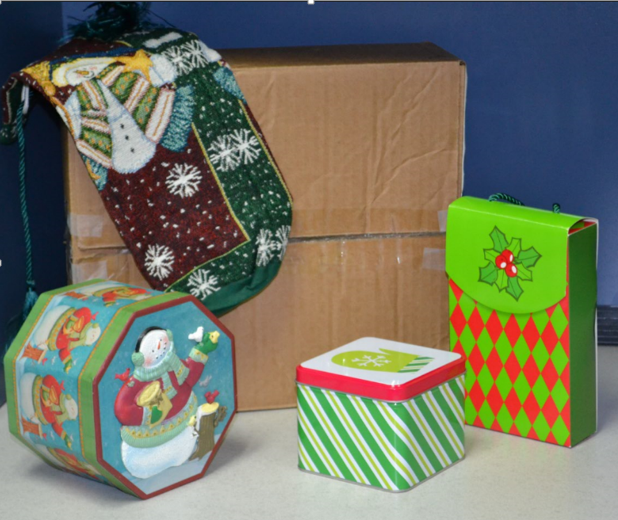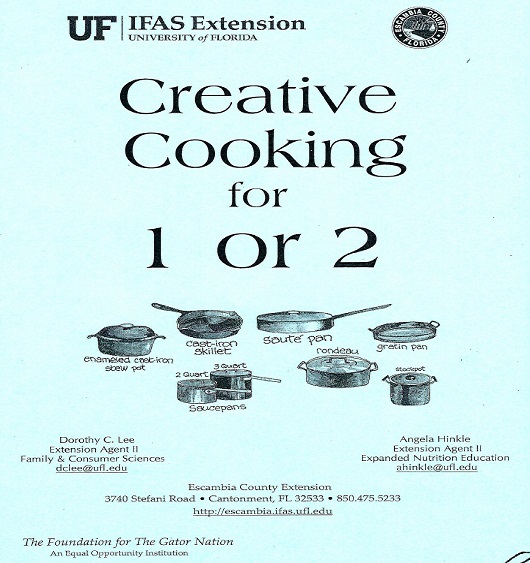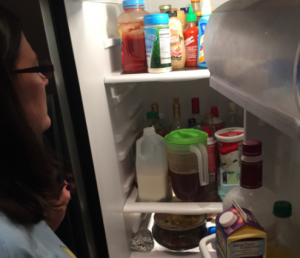by Dorothy C. Lee | Nov 25, 2016
 During the holiday season nothing carries good cheer and holiday spirit across the miles like receiving a package full of homemade treats.
During the holiday season nothing carries good cheer and holiday spirit across the miles like receiving a package full of homemade treats.
If you go to the effort of preparing food gifts, you want to be sure the contents arrive in the condition they were sent in. The first step is to pack it right.
- Select a strong sturdy cardboard, plastic, or metal container. Round oatmeal boxes or coffee cans with re-closable lids work well.
- On the bottom of the container place a generous layer of filler, such as crumped tissue paper, waxed paper, brown paper bags or plastic bubble wrap.
- Next, wrap baked goods individually or in pairs placed back to back. Begin with the sturdiest first. Moist, firm baked goods ship better than the brittle kind. Brownies, fudge and moist cookies pack well. Top with another layer of filler and repeat ending with a thick layer of filler.
- Fill the container full so the contents can’t shift when it is shaken.
- Be sure to pack several inches of cushioning material in the bottom of the shipping carton and enough material around, over and between items so that the contents cannot move easily. Brown paper bags and newspaper provide adequate cushioning for most packages. Save Styrofoam peanuts or foam packing pieces in packages for use when cushioning your packages.
- Place a card with the address of the sender and the receiver inside the carton, just in case.
- Wrap the carton in heavy brown paper, if desired, and seal it securely with transparent packing tape. Clearly label the carton; put the transparent tape over the address to keep it from getting wet and smeared. Mark it “perishable” to encourage careful handling. One of the best ideas yet is to give a gift within a gift that serves as its own alternative wrapping. Great tasting recipes become even more special when attractively packaged for giving.
- Embellish small metal coffee tins for packaging tiny truffles or other candies. Replace plastic tops to seal.
- Consider using an empty potato chip canister for packaging. Cover it with Christmas wrapping paper, fill it with cookies, candies or salty snacks, and replace its plastic top to seal.
- Fill a Christmas stocking with a favorite snack mix or nut mix. Package the mix in a re-sealable plastic bag and tuck it and holiday napkins into the stocking.
- Top off decorative jars of homemade desert sauces or jelly with raffia or decorative ribbon. Attach a homemade gift tag and a spoon.
- Bake and transport homemade bread in light weight recyclable aluminum pans available at most supermarkets. Wrap pans of bread with a large linen napkin or place bread in gift bags and tie with holiday ribbon.
- When giving a variety of foods together, include items to be eaten with your goodies or utensils that might be needed for further preparation.
Remember it’s the thought behind the holiday package that counts; the link with loved ones and the knowledge that someone is thinking of you during the holiday season. A package filled with homemade treats says “love” with every bite.

by Dorothy C. Lee | Oct 15, 2016
 A large and ever-growing number live the single life these days. You have a lot of company and something in common: freedom of choice. Cooking for one or two can be creative and nutritious. Whether you’re a novice cook or your family has grown and moved out, and, once again, you’re solo cooking…it still can be rewarding! Rewards? They can be summed up in one word: freedom—freedom to plan the meals you want and freedom to enjoy them when and where you want.
A large and ever-growing number live the single life these days. You have a lot of company and something in common: freedom of choice. Cooking for one or two can be creative and nutritious. Whether you’re a novice cook or your family has grown and moved out, and, once again, you’re solo cooking…it still can be rewarding! Rewards? They can be summed up in one word: freedom—freedom to plan the meals you want and freedom to enjoy them when and where you want.
Getting Ready to Cook for ONE or TWO
“Planning…shopping…storing…there’s so much to do even before I cook. Is it worth it for one or two?” Effort? Yes. But worth it? Definitely—who is more important to you? Call it “challenged” coupled with “just rewards.” Mostly, the challenge involves organization, planning, and nutrition. Here, then, is a Master Plan for meeting the challenges of “Solo-Cooking:”
Plan menu—preferably for a week’s worth of meals you’ll be preparing:
- Write out your menu
- A grocery list is a must
Survey your kitchen for basic cooking utensils:
- Non-stick skillet for stir-frying or pan broiling with little fat
- Vegetable steamer so you don’t boil away all the vitamins
- Two heavy-gauge stainless steel sauce pans: a small one for soups and sauces and a medium one for cooking pasta or steaming vegetables
- A paring knife for chopping and dicing and a large knife for cutting meats
- A wooden spoon that won’t damage non-stick pans
- Measuring cups and spoons
- Microwave cookware if you have a microwave oven (a microwave is a big plus for solo-cooking…it saves time and energy (your own and the local utility’s)
- Colander and wire whisk
Your cabinets don’t have to be bulging with exotic ingredients; just make sure you have basics on hand:
- Olive and vegetable oils for cooking and salad dressings
- Low-sodium bouillon and baking powder
- An assortment of herbs and spices
- Catsup and jelly
- Nonfat dry milk for recipes that call for milk
Frozen commercial microwave dinners make for quick and easy meals. Read nutrition labels and select low-fat meals that meet the following criteria:
- No more than 10 – 15 grams of fat
- 1,000 or less mg sodium per serving
- Frozen side dishes with 5 or less grams of fat and 400 or less mg sodium per serving
The frozen entrée also does not provide a balanced meal. Round it out with steamed or raw vegetables or a salad, whole grain bread, and fruit for dessert.
Once you have the basic strategies down and shopping under control, cooking for one or two can be a simple process. But what can you do if you’re faced with: (1) A tight budget and no food processor or microwave oven (2) Little time to cook and/or (3) An empty nest that makes mealtime a lonely time? Take Heart! You can meet these challenges with success. Here are some ways to make cooking for one or two easy and fun.
- Stir fry pre-chopped vegetables from the frozen section or from the grocery salad bar and serve with rice and beans.
- Steam pre-chopped vegetables and season with spices or low-sodium bouillon.
- Use a slow cooker…dump diced chicken, vegetables, and spices into the slow cooker in the morning and have a warm, homey aroma of a hearty, ready-to-eat stew in the evening.
- For breakfast, try a sandwich of thinly spread peanut butter with banana on whole wheat bread, bagel, or pita.
- Use your imagination—create super spuds. Top white or sweet potatoes with nonfat or lowfat yogurt or cheese, barbecue sauce, sautéed vegetables, or cream soups.
- Prepare extra when cooking rice, baked potatoes, oven meals, muffins, or pasta dishes. These can be refrigerated or frozen and used later.
Spicing up convenience foods…these foods are the salvation of many. But they often lack nutritional quality, texture, and home-cooked food flavor. You can boost nutrition and enhance the flavor by adding spices, vegetables, or meat. Try the following ideas or use your imagination!
- Add fresh onions and peppers to bottled or canned spaghetti sauce.
- Add a single-serving can of tuna to the pasta salad from the deli counter.
- Mix sliced vegetables with Rice-a-Roni. Or mix chili beans, tomato soup, chopped carrots, peppers, ¼ cup lowfat cheese, and onions with Spanish Rice-A-Roni for a hot, hearty goulash.
- Add grated lowfat cheese to quick-cooking grits.
- Add fresh fruit to plain lowfat yogurt.
- Add garbanzos instead of tuna or hamburger to Tuna and Hamburger Helpers.
For more ideas, check out:
Healthy Eating: Cooking for One
Healthy Cooking for 1 or 2
Cooking at Home Made Easy
Source: American Institute for Cancer Research
by Dorothy C. Lee | Aug 28, 2016

Does lettuce turn brown and slimy in your refrigerator? Is that two-year-old frozen turkey still safe to eat? Should you dispose of that slightly moldy cheese? “When in doubt throw it out” is definitely a safe practice to follow. However, throwing food out is like throwing money away. A few simple guidelines for food storage can save dollars and time spent on shopping.
Dairy Do’s and Don’ts
- Buy milk in cardboard cartons or non-translucent containers. Translucent containers allow light to seep in, which can cause the milk to spoil. Store milk in a refrigerator that is set at 40° or lower. Don’t store milk in the door of the refrigerator. Items stored in the door of the refrigerator are more susceptible to warm air that enters the refrigerator each time the door is opened.
- Discard unused milk after the container has been opened for a week. Milk may be frozen for up to three weeks.
- Ice cream has a shelf life of two to four months as long as it is stored in a freezer that is set at zero degrees Fahrenheit.
- Yogurt should be used within seven to ten days of purchase.
- Butter may be refrigerated, tightly wrapped, for up to one month and be frozen for six months.
- Hard cheeses will keep for three or four weeks, tightly wrapped, in the refrigerator once they have been opened. Processed cheese spreads will keep for three to four weeks after opening.
- Purchase eggs before the sell by date. Store eggs in their original packaging on the middle or lower shelf of the refrigerator. Refrigerated uncooked eggs will keep for three to four weeks from the time they are purchased. Hard boiled eggs in the shell will keep for one week. Don’t freeze hard cooked whole eggs or egg whites. They will be tough and watery when defrosted. Raw egg whites can be frozen in ice cube trays.
Meat and Poultry
- Store meat and poultry in a refrigerator set at 35° to 40° Fahrenheit.
- Put packages of raw meat, poultry, or fish on a plate before refrigerating so their juices won’t drip on other foods. Raw juices often contain bacteria.
- Follow the “use by”, “keep refrigerated”, and “safe handling” information on the packaged meat label.
- Meat should be cooked or frozen within a few days of purchase.
- Use chicken by the sell-by date unless you plan on freezing it.
- Chicken and turkey may be frozen for nine months to a year.
- Cooked chicken or turkey should be eaten or frozen within three to four days of preparation.
Fruits and Vegetables
- Use refrigerated fruits and vegetables within a few days of purchase. Wash vegetables and fruits thoroughly right before eating or preparing.
- Fruits and vegetables stored at room temperature should be stored in perforated bags away from direct sunlight.
Canned Food Items
- Don’t purchase cans that are dented, bulging, or rusted.
- Store canned goods in a cool dry place.
- Rotate canned food items on a timely manner to establish a well-stocked pantry.
- Shelf life is determined by the acid content of the canned food.
To assure safe food storage, USDA recommends an appliance thermometer be installed in all refrigerators and freezer sections. Appliance thermometers are available at local supermarkets or discount stores. The refrigerator section should be set at 40°F and freezer section at 0°F.
Safe food storage is top priority to prevent foodborne illness. So remember, “Store It Right!”
For further information, contact:
Dorothy C. Lee, CFCS
UF/IFAS Extension Escambia County
3740 Stefani Road
Cantonment, FL 32533-7792
(850) 475-5230
dclee@ufl.edu
Reference: www.USDA.gov
by Dorothy C. Lee | Jul 30, 2016
Do you consider buying groceries a real grind? A necessary evil? Well, it may never turn into a fun adventure for you, but there are some things you can do to make it easier on you and your budget.
Grocery shopping actually begins at home:
 Keep a note pad handy in the kitchen to make a list; when staple items are getting low, add them to your list so you won’t forget to replenish them. Then let your fingers do the walking through the grocery store ads to see which stores have the best buys on what you need.
Keep a note pad handy in the kitchen to make a list; when staple items are getting low, add them to your list so you won’t forget to replenish them. Then let your fingers do the walking through the grocery store ads to see which stores have the best buys on what you need.- You may want to plan menus around advertised specials and seasonal foods. It helps to have menus planned for the week so you can be sure to have all the necessary ingredients on hand.
- If you plan to use paper coupons, clip them to the list or use an electronic app. It is helpful to have the list organized according to the layout of the store to avoid backtracking for missed items.
- When shopping, buy non-perishables first and save refrigerated and frozen items for last. Make the grocery store your last stop if you are doing other errands. Once home, frozen and refrigerated items should be brought in and stored first.
- Finding the best buy can sometimes be a little tricky. Doing your homework with grocery ads is a good start for comparison shopping. When you get to the store, a little more detective work may be needed. If the store has it, learn to use unit pricing. This is the label on the shelf which gives not only the total price but also the price per unit (ounces, pounds, sheet, etc.). Buying larger sizes often saves money. However, this is not always the case, so use unit pricing or a calculator to check (divide the price by the number of ounces, pounds, etc.). Even if the larger size is cheaper per unit, be sure you can use all of it; if it spoils or can’t be stored, it is not a bargain. Can you divide foods into smaller portions and freeze some for later, or share with a friend?
- Another way to save is to compare national brands with store brands which are usually cheaper. The quality may or may not be the same, so try it once to see if it is acceptable. The nutritional value is usually the same.
- Buy the quality or form you need for the purpose. For example, don’t buy whole canned mushrooms then chop them into pieces if buying a container of already cut mushroom pieces is cheaper.
- Compare fresh, frozen and canned forms, especially for seasonal produce.
- Shop on a full stomach and alone if possible. Hunger and children often lead to impulse buying.
- Buy only the items on your list; anything else should be avoided unless it is a good buy on something you’re sure you will use.
- A larger portion of our “grocery” bill is actually for non-food items such as household cleaners, paper goods, personal grooming products, etc. Comparison shopping is important here too. Are there other types of stores where these products might be cheaper? Can these be purchased cheaper in bulk?
- Convenience foods are a part of today’s lifestyle. While they may save us time, they are usually more expensive than the homemade version. With some convenience foods you are paying for labor; grated cheese, cut up chicken, etc. With others we are paying for having ingredients packaged together; meat helpers, macaroni and cheese or vegetable sauces, etc. Compare time savings with the added cost. Are you paying for ingredients you may already have on the shelf or are easily purchased separately?
If you have questions about budgeting, shopping, menu planning or nutrition, contact your Family and Consumer Science Extension Agent.
For further information contact:
Dorothy C. Lee, C.F.C.S.
UF/IFAS Extension Escambia County
dclee@ufl.edu

by Dorothy C. Lee | Jun 29, 2016
 A busy schedule is the most used excuse for not eating nutritiously. When pressed for time, it’s easy to fall into the habit of making unhealthy food choices.
A busy schedule is the most used excuse for not eating nutritiously. When pressed for time, it’s easy to fall into the habit of making unhealthy food choices.
For those who have no time to prepare meals during the work day, yet want to eat nutritiously, one solution is to plan ahead and prepare mini meals and snacks that can be eaten at any time. Not only will this save money, it will help guard against that temptation of vending machines or fast food. Several snacks spaced throughout the day can take the place of several meals. Snacks also help curb between-meal hunger. Snacking is a great solution as long as you don’t forget to make healthy choices.
Here are some tips for preparing nutritious on-the-go meals and snacks:
Planning Ahead
- Your food choices will depend partly on the facilities available where you work. If there is a refrigerator, food selection can be more varied and a microwave is a plus.
- Plan a week’s worth of snacks. Add these food items to your weekly shopping list.
- Invent ways to use leftovers in snacks. Be creative!
- Prepare and pack the food the night before if your mornings are hectic.
- Create a mess kit to keep at your desk. Include a can opener, mug, plate, utensils, and napkins. Paper plates and plastic utensils make clean-up easy.
Pack It Up at Home
- Invest in a selection of small plastic containers that can be easily packed into an insulated lunch bag. These are usually inexpensive.
- Use insulated containers to keep hot foods hot and cold foods cold.
- Purchase a selection of plastic bags with a variety of seals. Also, have aluminum foil and plastic wrap available.
Snacking by Food Group
- Meat, Poultry, Fish and Alternatives – Try individual-sized cans of fish and chicken; hard cooked eggs; peanut butter; unsalted nuts; cooked, dried peas and beans in salads; and leftover cooked meats and poultry in sandwiches and salads.
- Dairy – Include low fat-yogurt and yogurt drinks in convenient serving size containers, low-fat cottage cheese, skim milk, low- fat milk, and individually wrapped cheeses. You can satisfy a sweet craving with individual servings of ready-made pudding or a flavored cheese.
- Grains – For convenience, include individual serving size boxes of cereal. Choose cereals low in sugar. Select enriched whole grain breads, rolls, crackers, and pita bread. Whole grain or enriched cookies or muffins are a nutritious choice for something sweet.
- Fruits/Vegetables – Fruits are a natural to pack since many come in their own package – for instance, bananas, grapes, oranges, apples and pears. Dried fruits now are available in serving size packets. You also can buy them in bulk and make your own packets.
- Vegetables – Fresh vegetables make great crunchy snacks. Serve with a yogurt- or cottage cheese-based dip, or tossed with a vinaigrette as a vegetable salad.
- Munchies/Combos – Mix plain yogurt with fresh fruits or dry whole grain cereal.
- Trail mix in individual serving size packets travels well. Make your own with dried fruits, unsalted nuts, seeds, and cereals.
- Stuff celery with peanut butter or farmer cheese mixed with raisins.
- Mix salads with cottage cheese and chopped fresh fruits or vegetables.
- Try individual serving size packets of whole grain chips, potato chips, and pretzels.
- Snacks You Can Keep in Your Desk Drawer – Keep a supply of emergency rations such as peanut butter, whole grain crackers, nuts, dark chocolate, and raisins available for days when you forget lunch and just cannot get out.
Munching on this combination during the day may help you resist turning in at the first fast food place you pass on the way home!
 During the holiday season nothing carries good cheer and holiday spirit across the miles like receiving a package full of homemade treats.
During the holiday season nothing carries good cheer and holiday spirit across the miles like receiving a package full of homemade treats.





